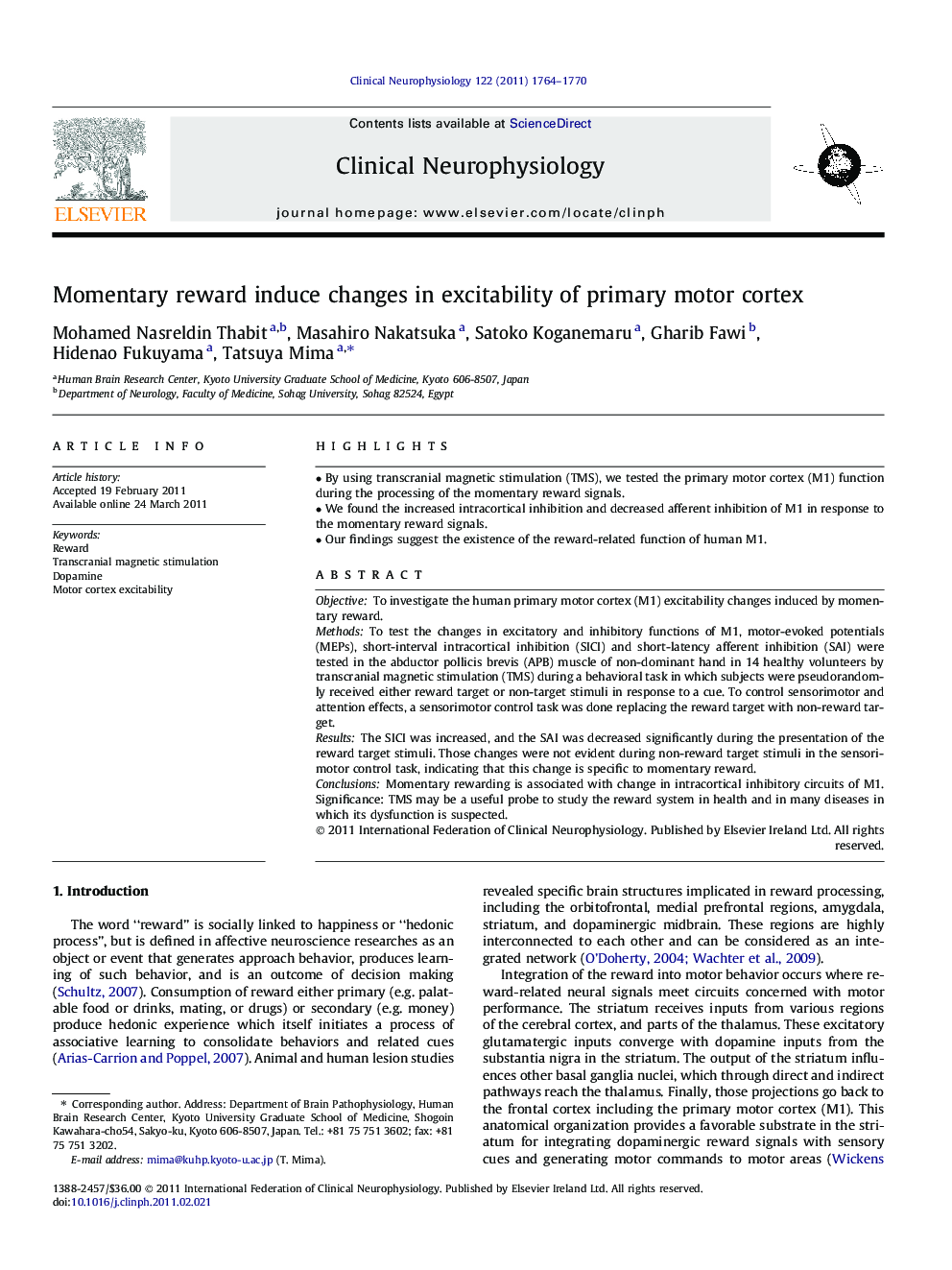| کد مقاله | کد نشریه | سال انتشار | مقاله انگلیسی | نسخه تمام متن |
|---|---|---|---|---|
| 3045783 | 1185030 | 2011 | 7 صفحه PDF | دانلود رایگان |

ObjectiveTo investigate the human primary motor cortex (M1) excitability changes induced by momentary reward.MethodsTo test the changes in excitatory and inhibitory functions of M1, motor-evoked potentials (MEPs), short-interval intracortical inhibition (SICI) and short-latency afferent inhibition (SAI) were tested in the abductor pollicis brevis (APB) muscle of non-dominant hand in 14 healthy volunteers by transcranial magnetic stimulation (TMS) during a behavioral task in which subjects were pseudorandomly received either reward target or non-target stimuli in response to a cue. To control sensorimotor and attention effects, a sensorimotor control task was done replacing the reward target with non-reward target.ResultsThe SICI was increased, and the SAI was decreased significantly during the presentation of the reward target stimuli. Those changes were not evident during non-reward target stimuli in the sensorimotor control task, indicating that this change is specific to momentary reward.ConclusionsMomentary rewarding is associated with change in intracortical inhibitory circuits of M1. Significance: TMS may be a useful probe to study the reward system in health and in many diseases in which its dysfunction is suspected.
Research highlights
► By using transcranial magnetic stimulation (TMS), we tested the primary motor cortex (M1) function during the processing of the momentary reward signals.
► We found the increased intracortical inhibition and decreased afferent inhibition of M1 in response to the momentary reward signals.
► Our findings suggest the existence of the reward-related function of human M1.
Journal: Clinical Neurophysiology - Volume 122, Issue 9, September 2011, Pages 1764–1770